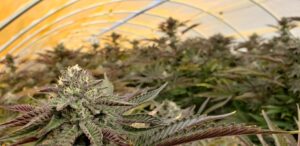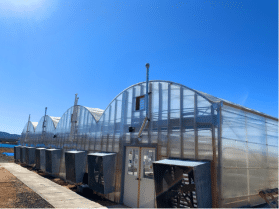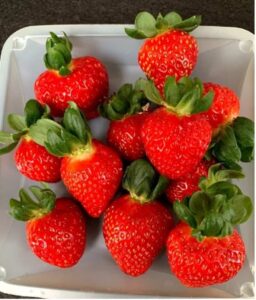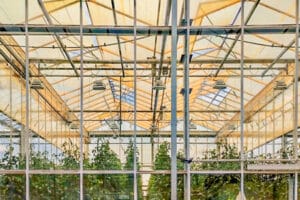
Gaining An Extra Harvest Annually
- Vegetables
- Case Studies
AT A GLANCE
- Results
- Crop
- Farm
- Location
Plants under UbiGro exhibited faster growth rates. Under UbiGro, faster growth rates culminated in earlier flowering. Crops grown under UbiGro were ready for harvest on average 7-10 days earlier than were control crops, allowing for an additional crop cycle per year, providing significant additional yearly revenue with UbiGro installed. Crop canopies under UbiGro exhibited a greater surface area and contributed to more rapid growth. Plants grew larger shoot and root systems under UbiGro. Image-based phenotyping is underway to statistically compare growth differences and will be published in 2024.
Ornamental pepper, kale, celosia, angelonia, alternanthera, plectranthus, coleus, and new guinea impatiens
PlantPeddler has been growing annual ornamental crops since 1980. Boasting over 12 acres of covered cultivation space, including glass-glazed greenhouses and Quonset-style high tunnels, PlantPeddler sells finished plants to retailers and young plants to growers.
Cresco, Iowa
ABOUT THE PROJECT
UbiGro (600 nm, orange) Inner quantum dot greenhouse films were installed in Quonsets (dimensions 21m x 5m, polyethylene cover) at PlantPeddler in Cresco, Iowa. Two thousand square feet of UbiGro were installed horizontally, and 1,000 ft2 were installed vertically to increase crop yield and benefit from advanced agricultural techniques. Identical Quonsets without UbiGro served as the control group, shown in the picture below. Quonsets were identical in humidity, air temperature and movement, fertigation, and pest management. Plant material was also identical: cultivar, planting density, and growth stage, ensuring that any increase in plant growth rate could be accurately measured. This setup also highlights the benefit of crop rotation in maintaining soil health and productivity.
PlantPeddler traditionally grows their kale, pepper, and celosia for 11 weeks. Under UbiGro, the plants were ready to be harvested after 9.5 weeks. As a result, plants could be delivered to customers 10 days earlier than their traditional shipment dates.
UbiGro
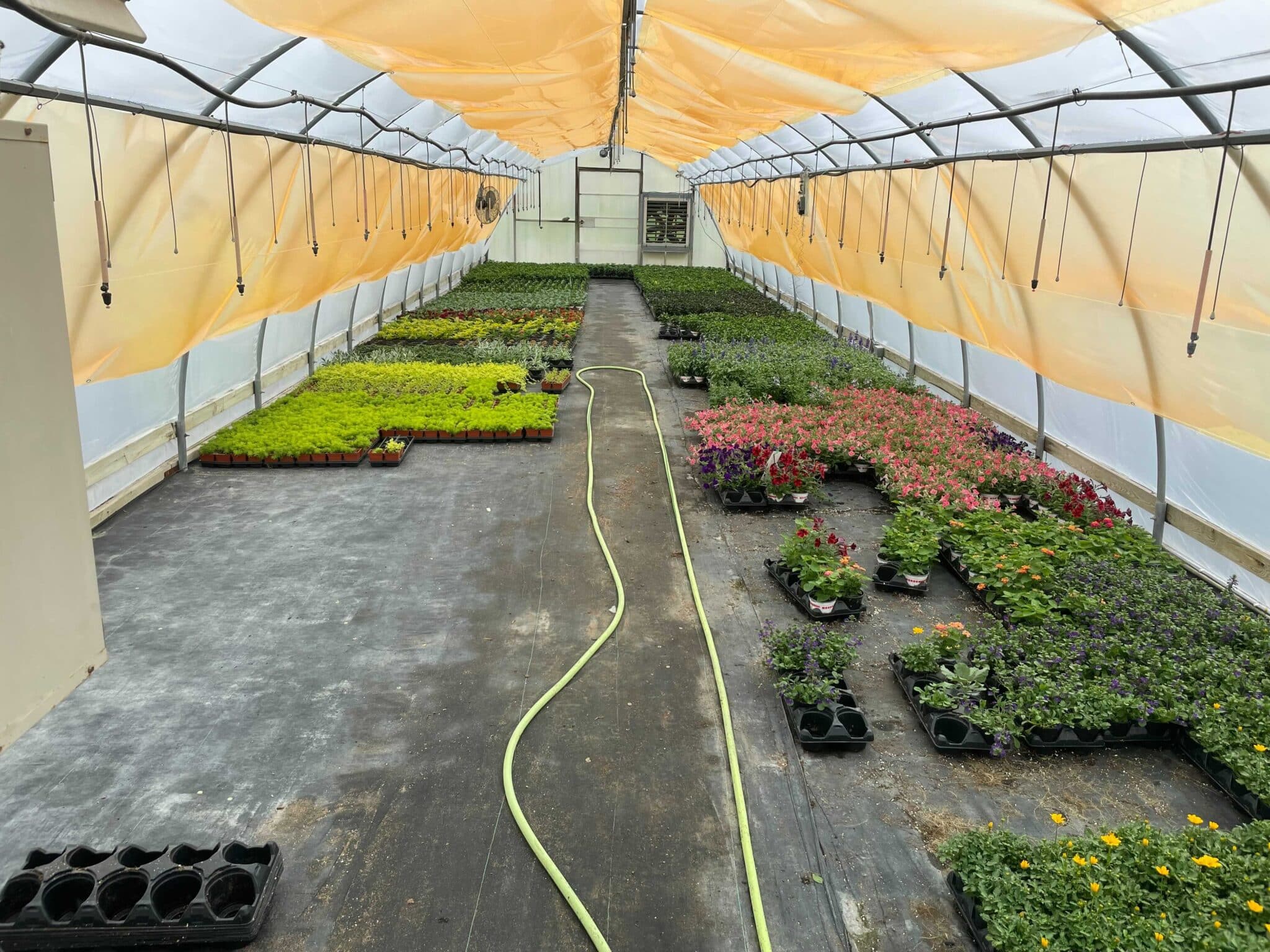
Control
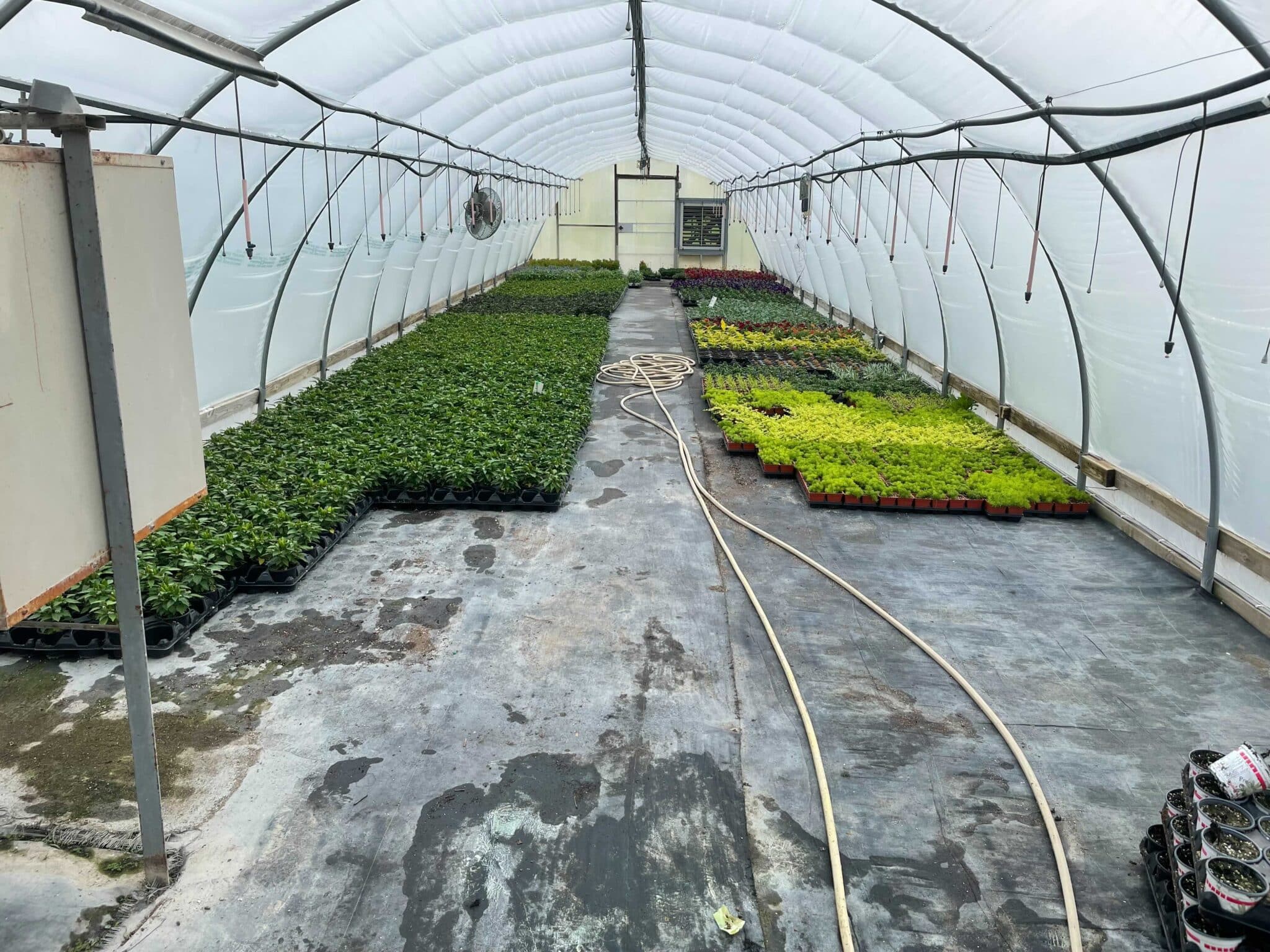
Faster Growth Rate
Plants under UbiGro exhibited faster growth rates, leading to an increase in crop yield. As a result, all crops tested were able to be harvested 10 days earlier. After being germinated in the same environment, kale was transplanted and moved into UbiGro and controlled by Quonsets, initiating the light treatments. Kale was photographed every 3 weeks after transplant (WAT), shown in the visual below. At 6 weeks post-transplant, the plant canopy under UbiGro was noticeably fuller, with less open space between plants. By 9 weeks, the plants under UbiGro exhibited leaves with more texture and color, suggesting they emerged from the meristem earlier than leaves on control plants, giving them a longer period of time to develop. This increased plant growth rate is one of the significant benefits of UbiGro’s lighting technology. The second set of photos below shows side-by-side comparisons of various species grown under the UbiGro and control light treatments; listed from top to bottom: coleus and new guinea impatiens, ornamental pepper, alternanthera, and plectranthus. Plants in both treatments were grown for the same duration, demonstrating the benefit of crop rotation and optimized lighting.
Ubigro
Control
WAT
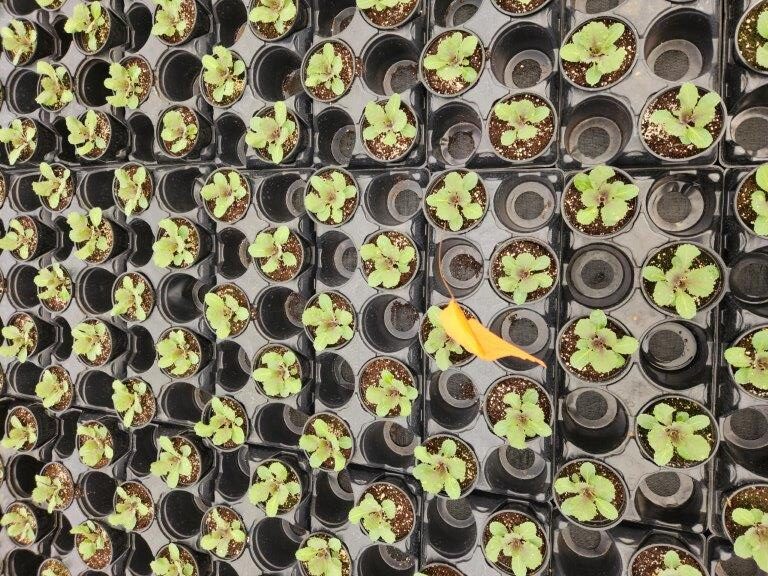
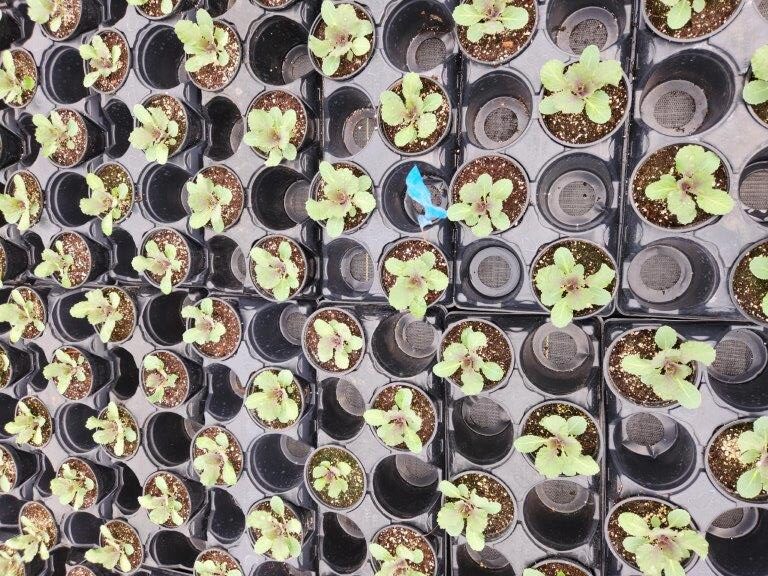
3
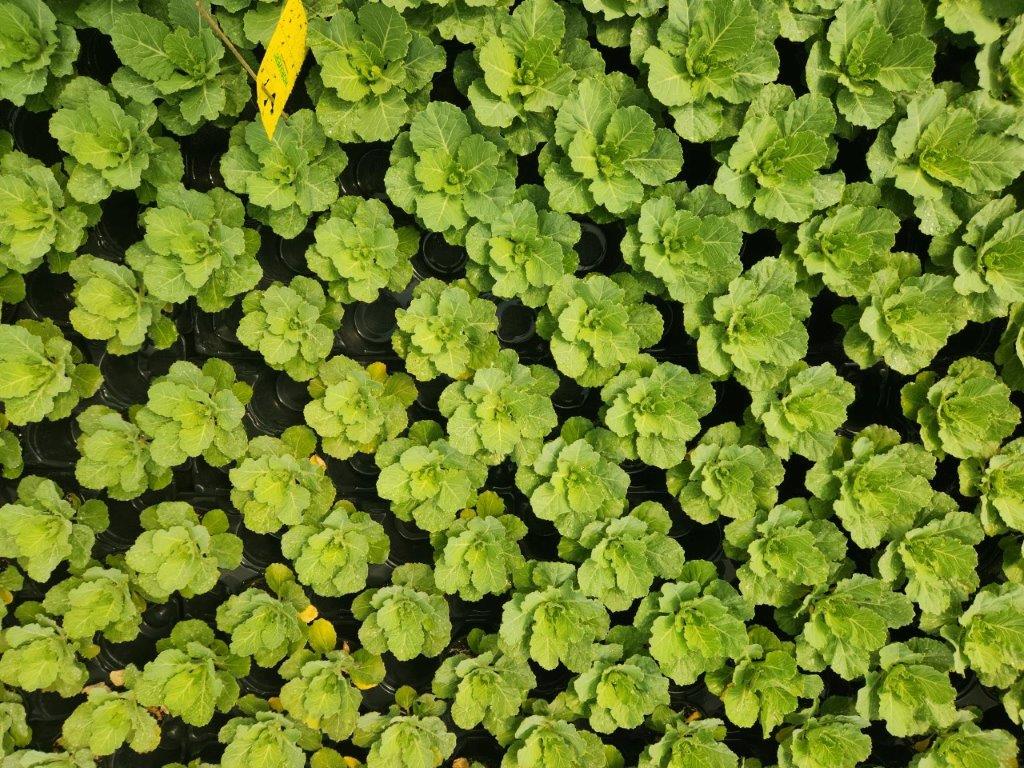
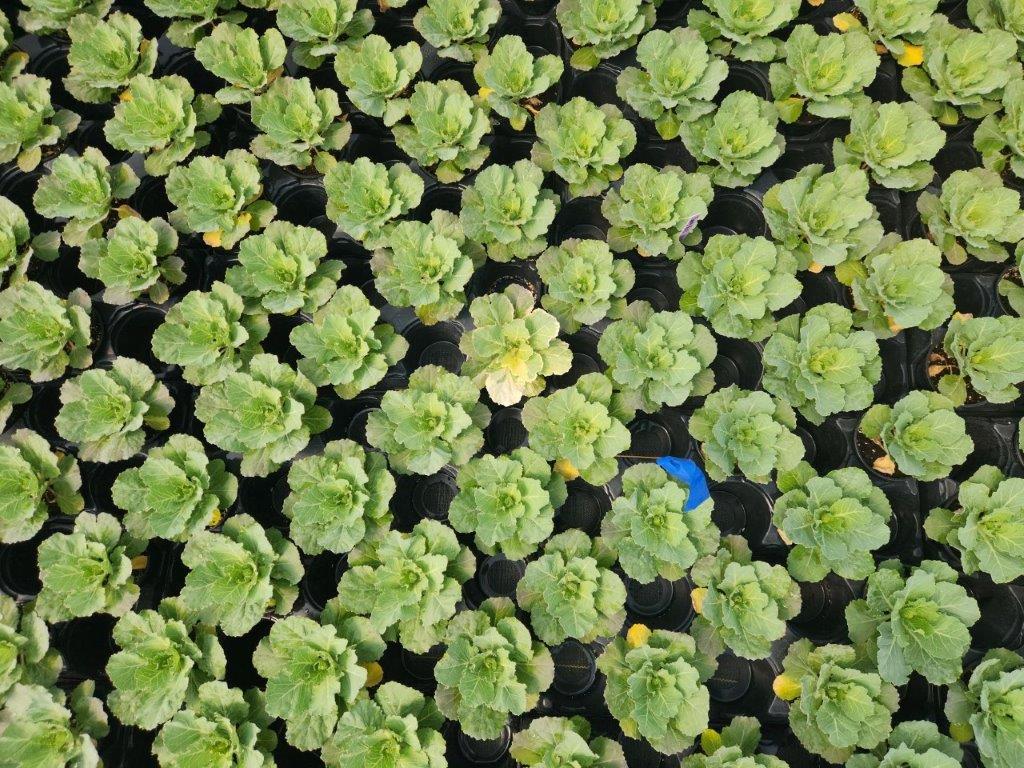
6
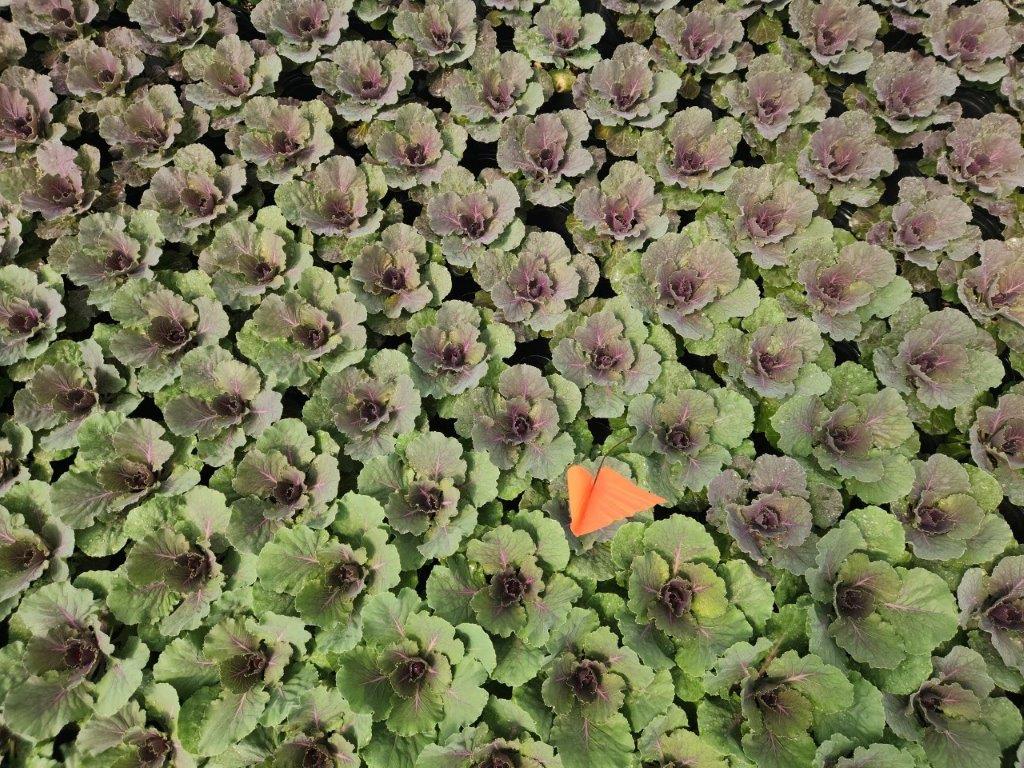
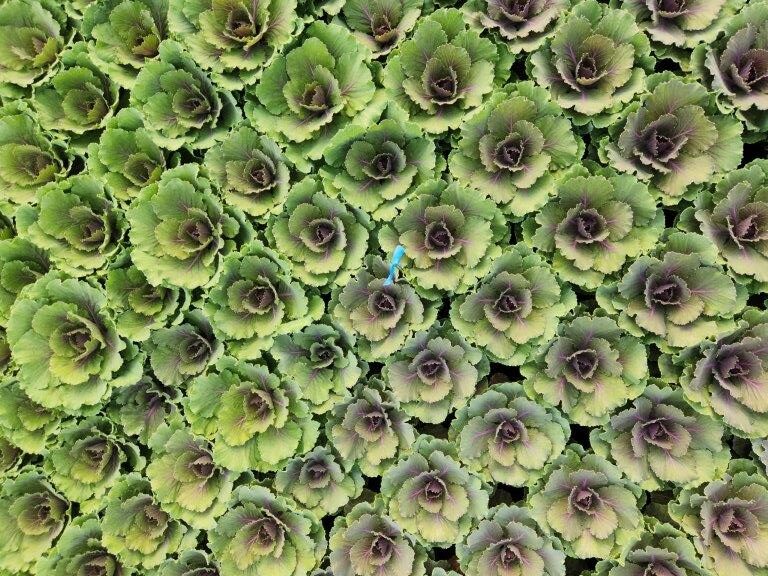
9
UbiGro
Control
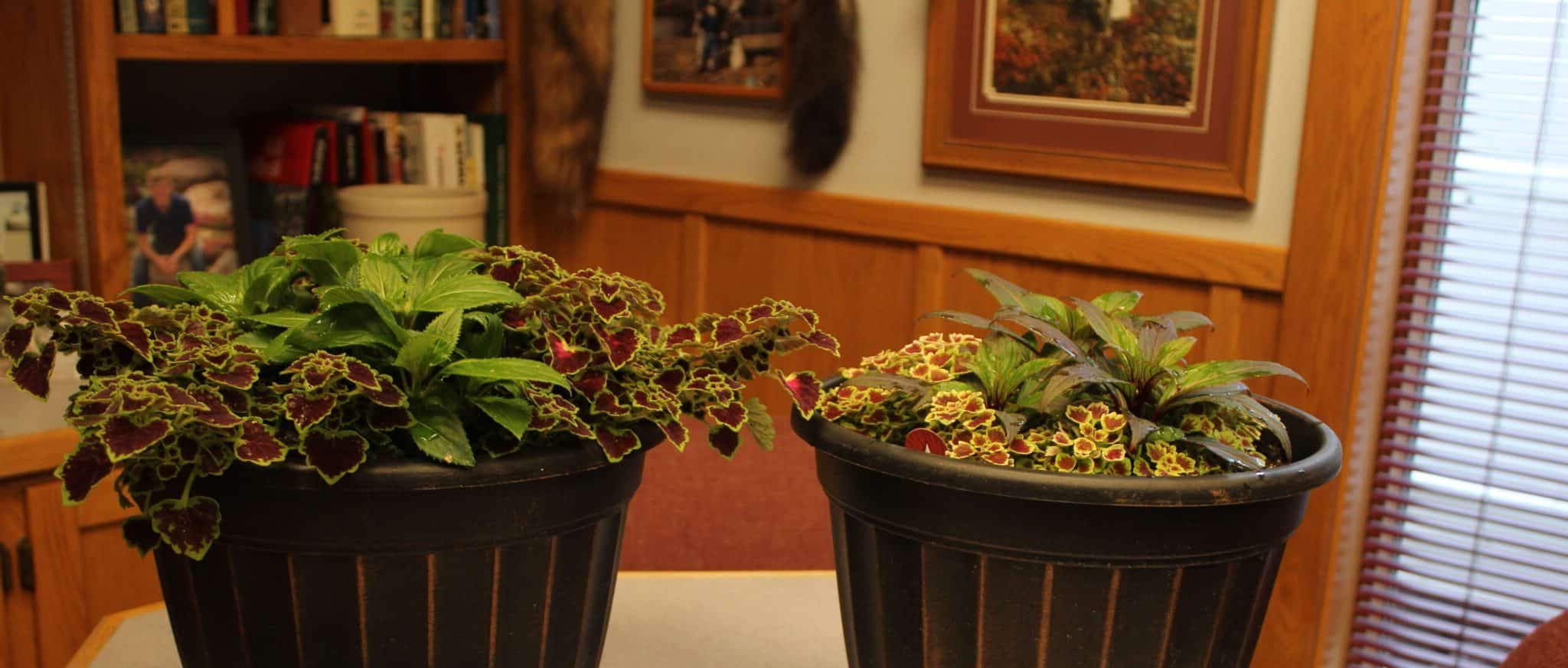
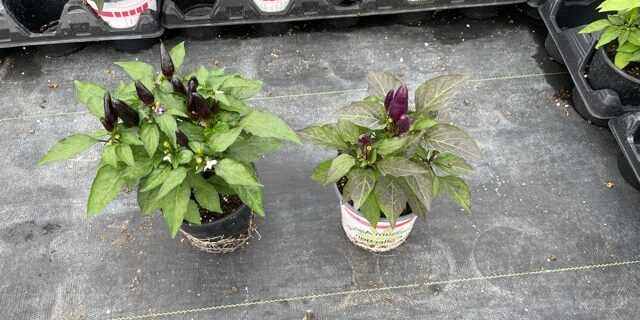
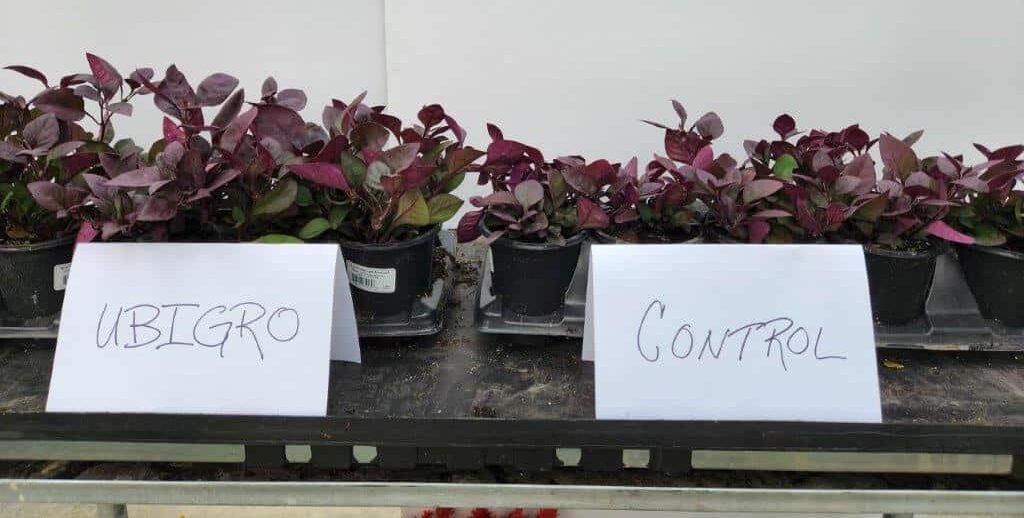
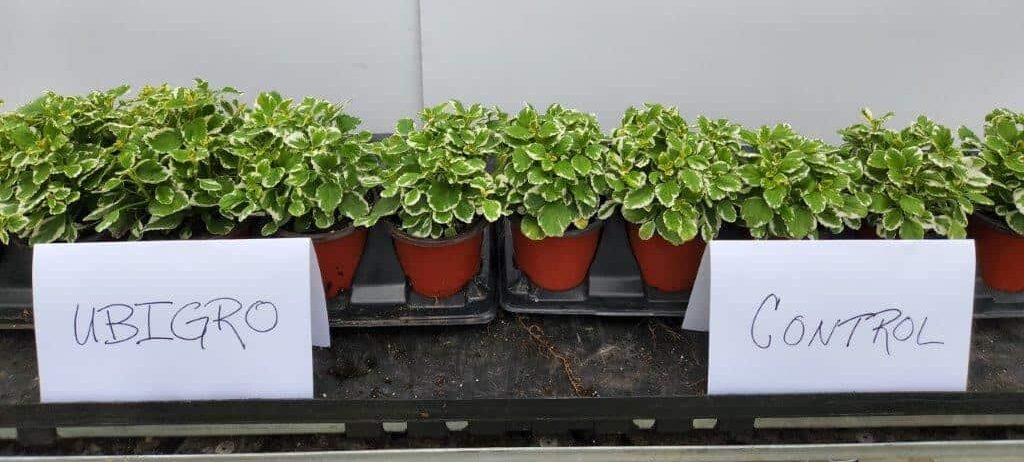
Greater Canopy Coverage
Even when plants were at a young growth stage, the average surface area of the crop
canopy was greater under UbiGro, suggesting UbiGro increases leaf expansion and/or number of leaves. Pictured below is an early growth stage celosia plant canopy displaying increased surface area compared to control plants. The crop canopy covering a larger surface area increases radiation interception, fueling photosynthesis, and at least partially explaining the faster growth rates. In 2024, more advanced analyses at PlantPeddler will compare treatments based on data obtained
from image – based phenotyping of leaf area and pigmentation. Observationally, not only were plant shoots larger under UbiGro, but also root systems. Shown in the second visual below, roots appeared to be thicker and have more hairs, which would allow for more nutrients and water to be taken up from the substrate. Anecdotally, roots were also whiter in color: a general indicator of better root – zone health.
UbiGro
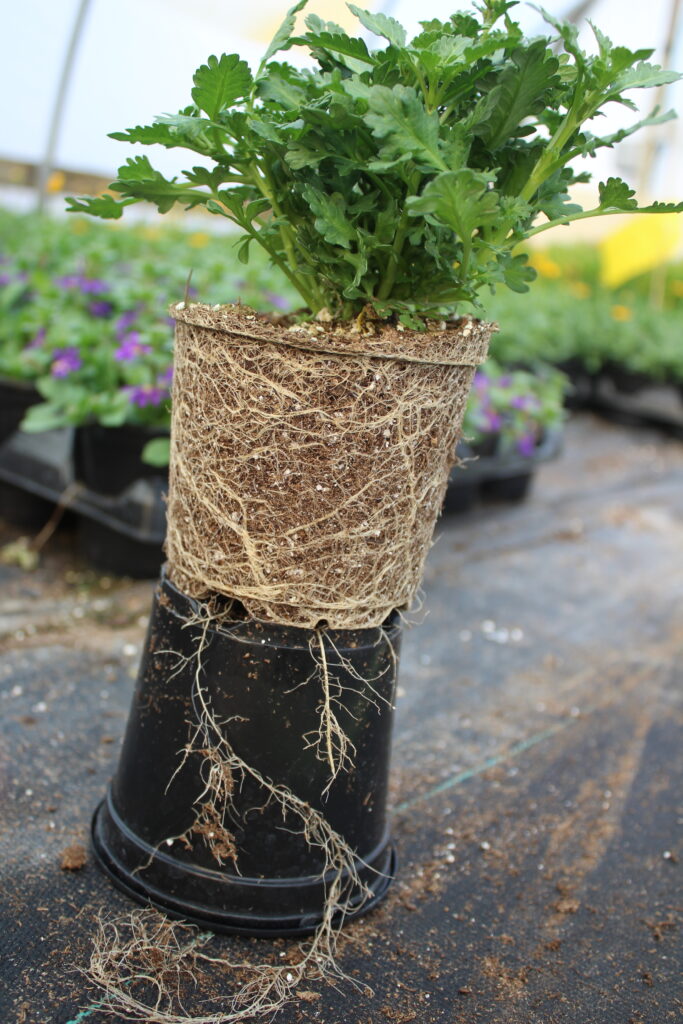
Control
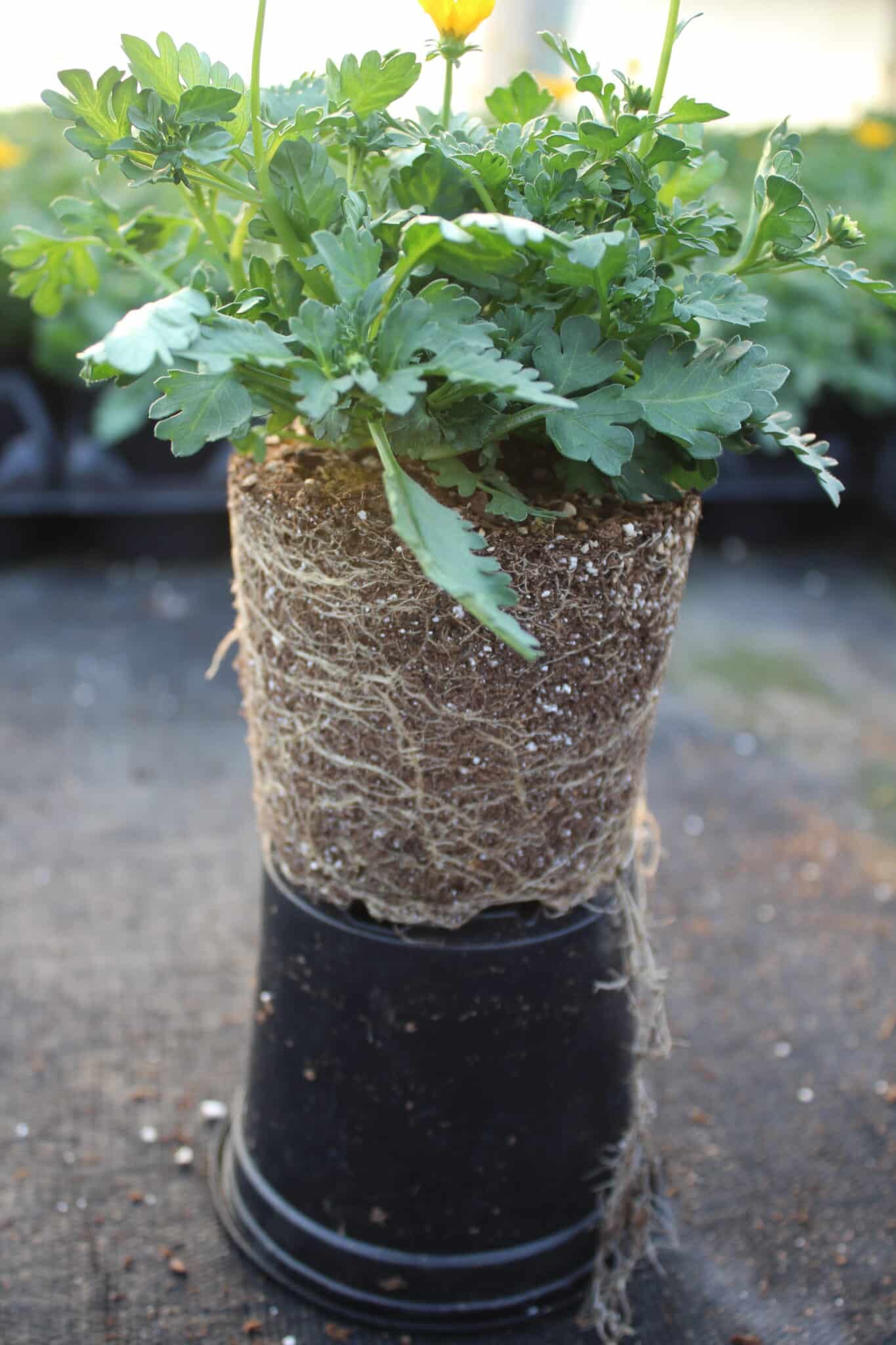
Earlier Flowering
Under UbiGro, faster growth rates culminated in earlier flowering. Considering the larger canopy, plants under UbiGro likely photosynthesized enough carbohydrates
to transition from vegetative to reproductive growth earlier than control plants.
Shown in the visual below, pepper was transplanted and moved into UbiGro and control Quonsets, and photos were taken every 3 weeks after transplant. At 6 weeks
post – transplant, pepper under UbiGro had started to flower. The control treatment
took an additional week to start flowering.
Ubigro
Control
WAT
Vegetative
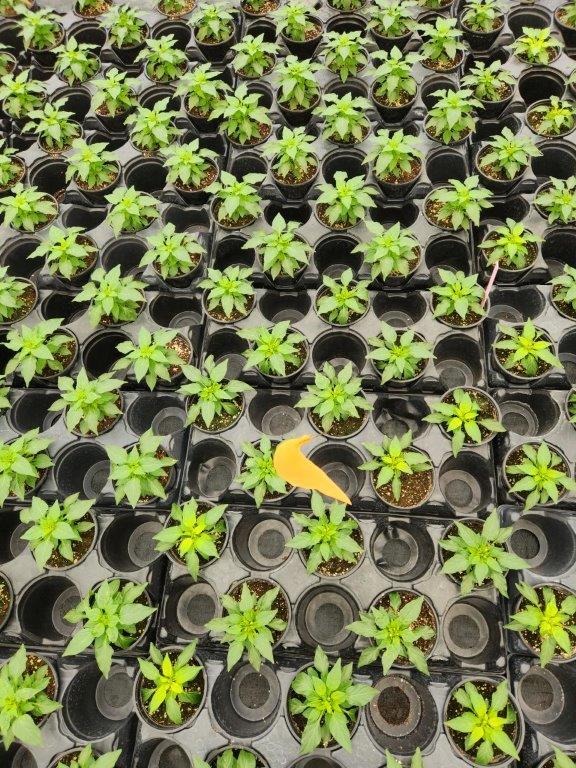
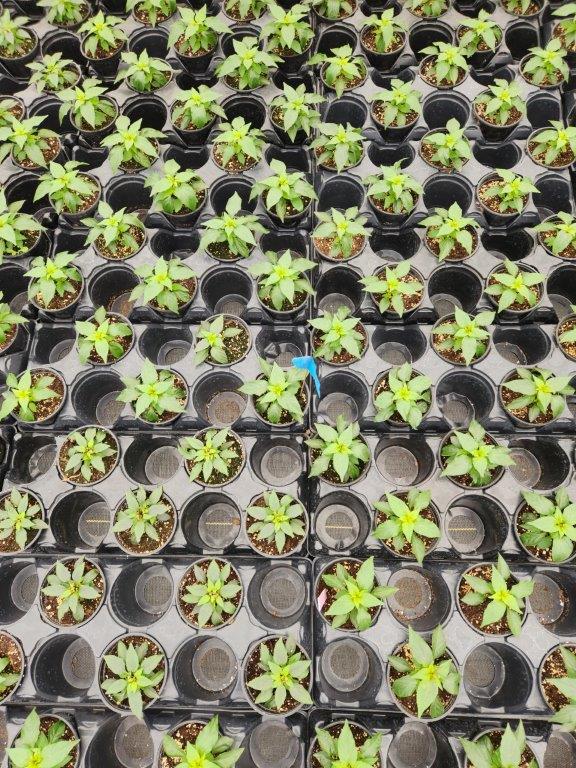
3
Early Flower
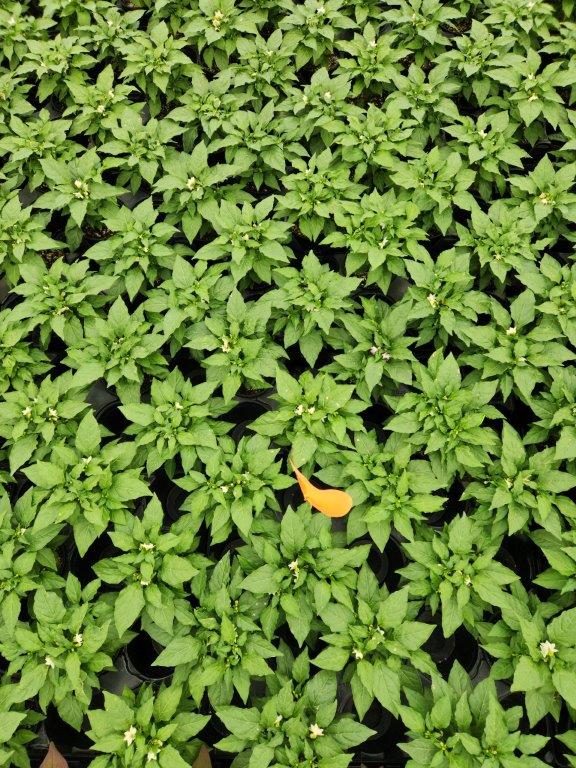
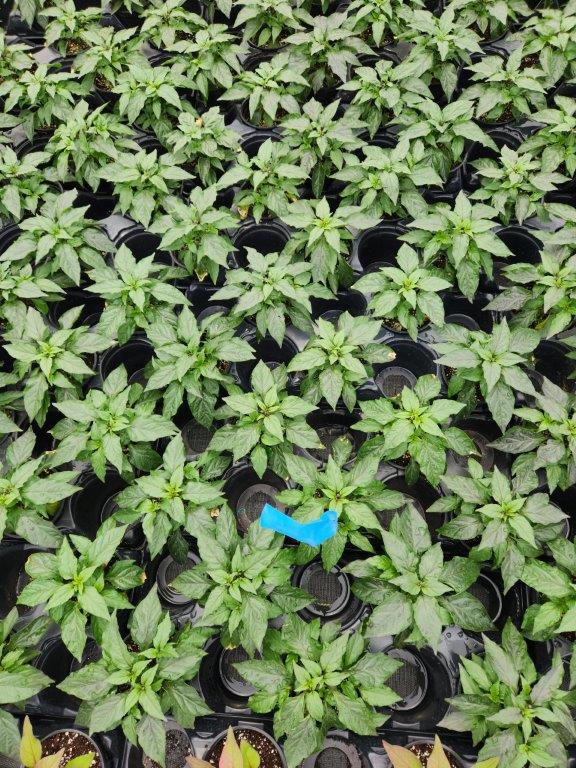
6
Full
Flower
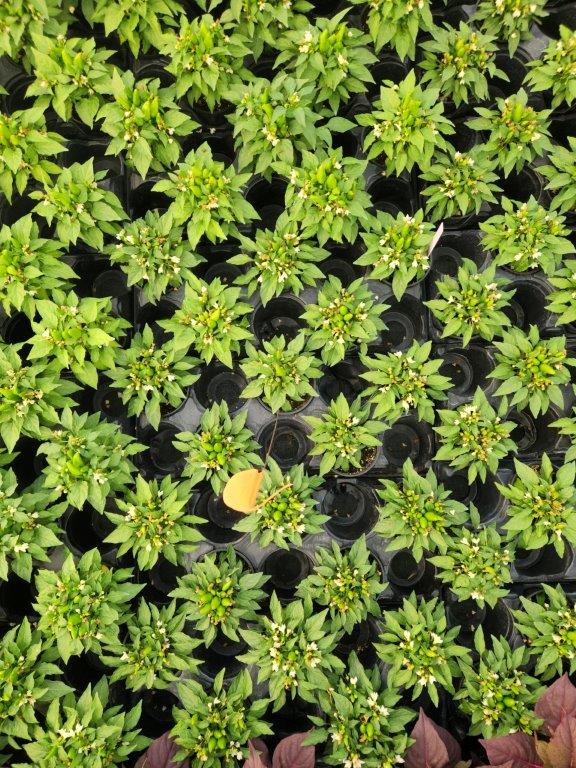
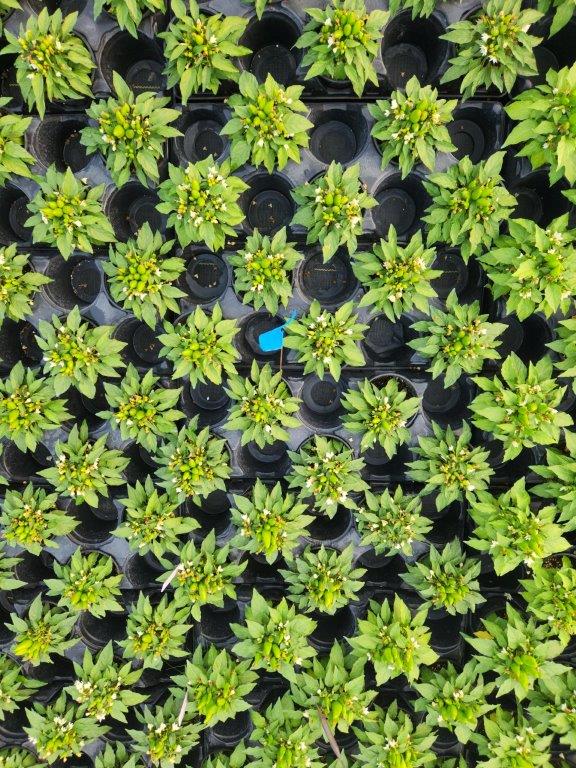
9
Flowering Visual Characteristics
Not only did flowering initiate earlier under UbiGro, but visual characteristics of flowers were also improved. Based on qualitative observations by experienced growers, peppers under UbiGro had more flowers, while celosia and angelonia flowers grew taller and bigger compared to the control treatment, shown in the two figures below.
UbiGro
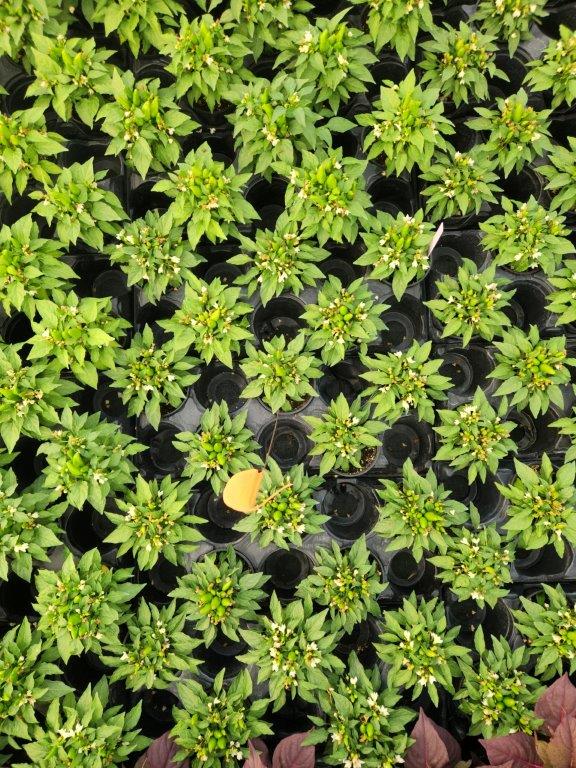
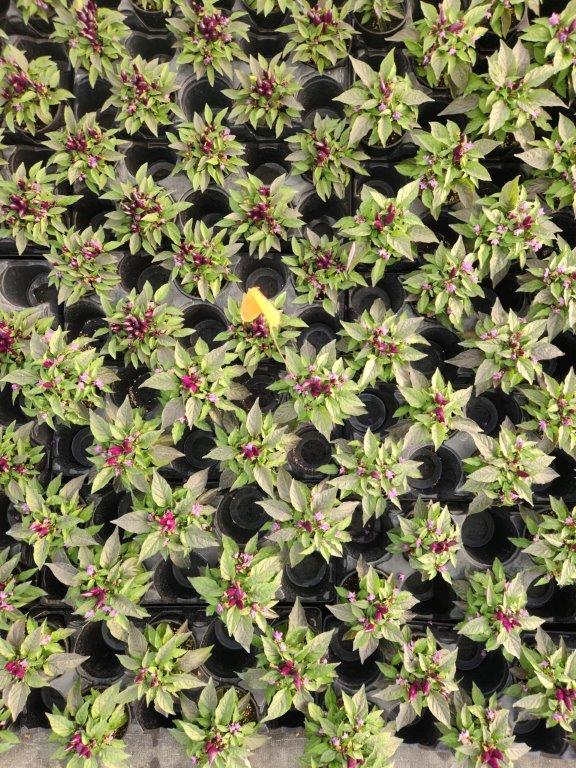
Control

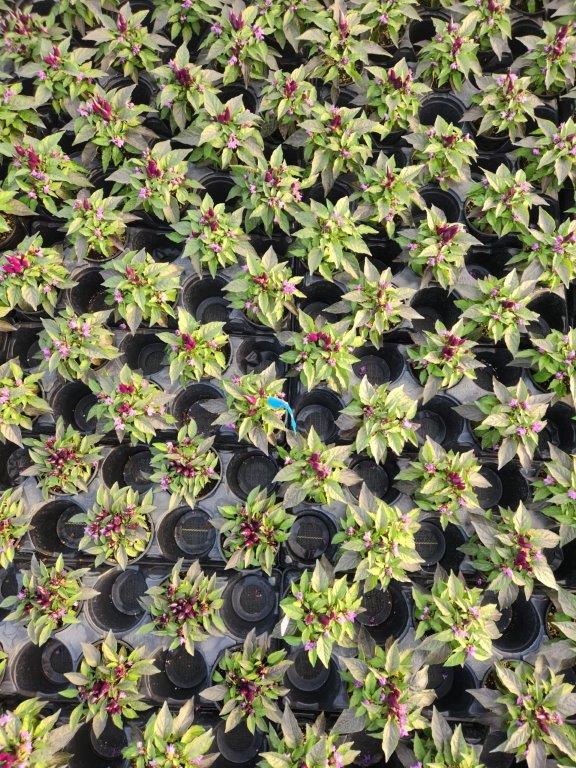
UbiGro
Control
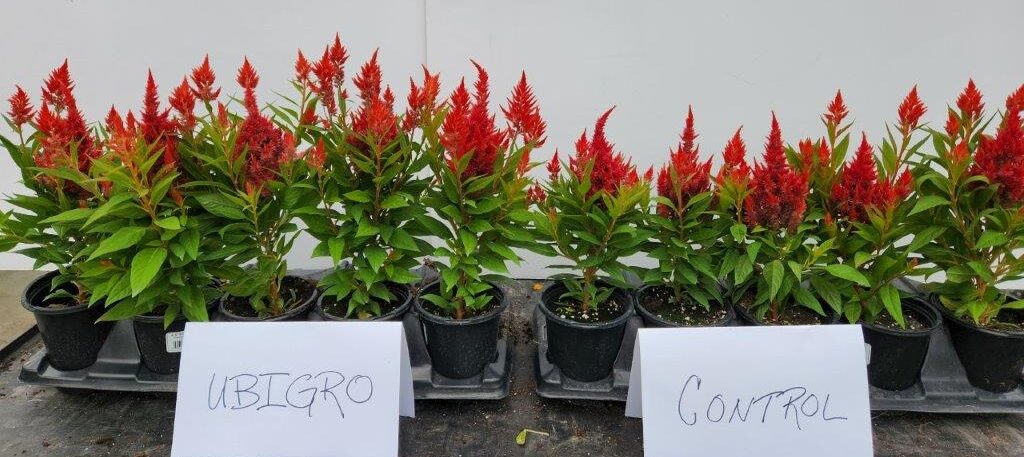
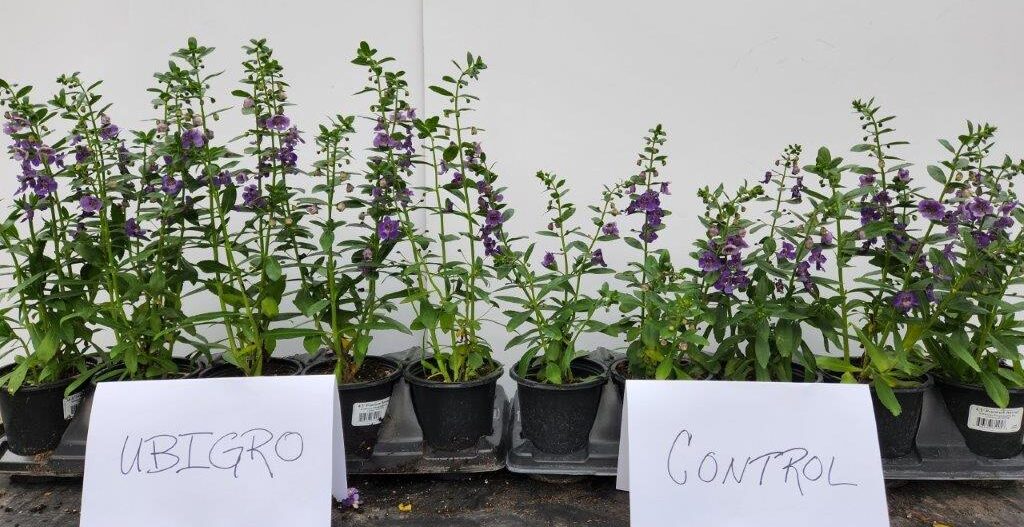
Conclusion
PlantPeddler traditionally grows their kale, pepper, and celosia for 11 weeks. Under UbiGro, the plants were ready to be harvested after 9.5 weeks. As a result, plants could be delivered to customers 10 days earlier than their traditional shipment dates. This shorter cultivation period frees up space for additional crop production, leading to an increase in crop yield. If growing these crops from spring through fall (39 weeks), the cultivation period under UbiGro allows for 4 full crop cycles instead of 3. If growing year-round, 5 full crop cycles could be grown instead of 4. Based on planting density and selling price, this translates to an extra $11,520 yearly revenue per Quon set with UbiGro installed.
Although grown for a shorter duration, plants under UbiGro exhibited larger shoots and root systems, indicating an increase in plant growth rate. Flowering occurred earlier under UbiGro and was more prolific, with plants showing more flowers which were also taller and larger than the control plants. Image-based phenotyping is underway to statistically compare growth differences and will be published in 2024. The benefit of crop rotation, combined with UbiGro’s technology, further enhances the potential for increased yield and plant growth.
Share:
Connect With Us
Company
Resources
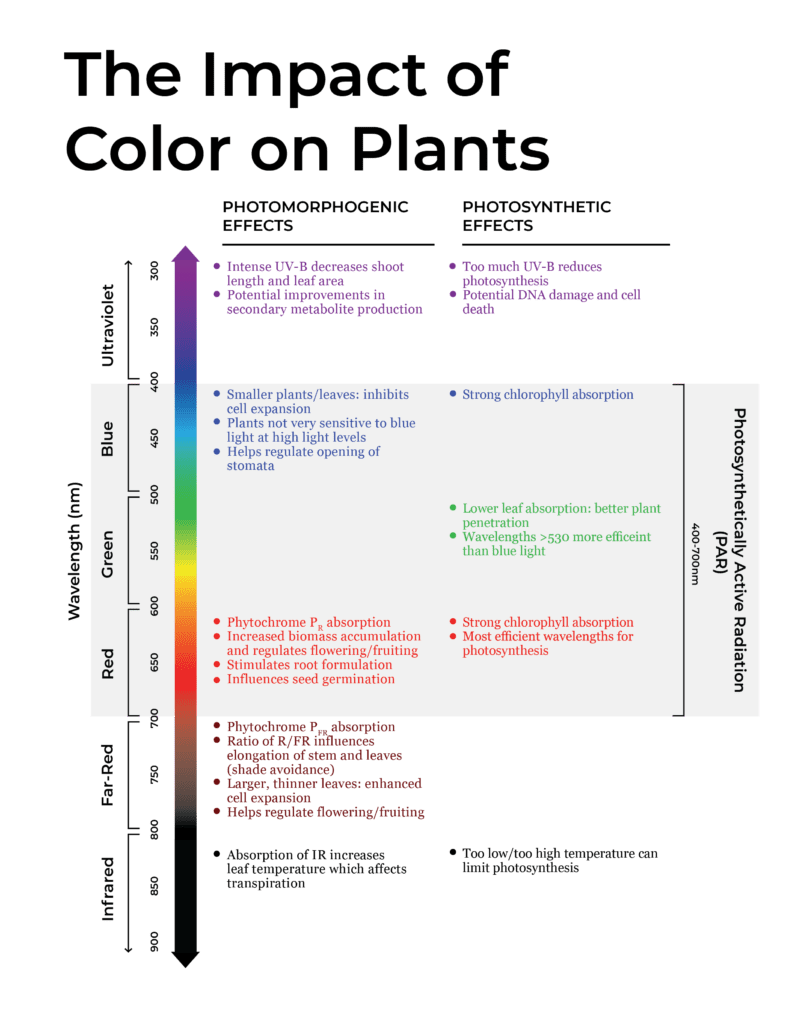

Hunter McDaniel, PhD
Founder & CEO
Hunter earned a Ph.D. in Materials Science and Engineering at the University of Illinois at Urbana-Champaign, before joining Los Alamos National Laboratory in the Chemistry Division. Ultimately the value proposition of UbiGro is about boosting crop yields and quality without the cost or energy impact of lighting. Hunter has more than fifty publications and patents, and more than 2000 total citations, h-index: 20. Hunter fundamentally believes that novel materials underpin every significant technology advancement, and he is focused on leveraging new materials to have a lasting and sustainable impact.

Damon Hebert, PhD
Director of Agriculture
Damon brings a wide range of experience in agriculture, materials science, spectroscopy, and small business. During his time in Prof. Angus Rockett’s research group at The University of Illinois at Urbana-Champaign (UIUC), Hebert authored a doctoral thesis and multiple papers on the materials science of CIGS semiconductor materials, which is closely related to the materials developed at UbiQD. He also served as a consultant to Nanosolar, a CIGS nanocrystal solar cell manufacturing company. Hebert has industry experience having co-founded Dr. Jolly’s, a leading cultivation and distribution operation in Bend, OR.

Tania Lafaille
Sales Representative
Tania is a UbiGro Sales Representative, with over 7 years of experience in product sales (specifically berries and avocados) covering all of North America and parts of South America. While in agriculture, Tania has cultivated strong relationships with growers and distributors, granting her a unique insight into both perspectives. That understanding, paired with her fierce dedication to results, drives her fun and fiery commitment to her craft. Tania is based in Gilroy, CA.

Tyler Veyna
Sales Representative
Tyler brings 15 years of experience in Greenhouse production and facility management of a wide range of crops in multiple states to the UbiGro team. Based in Salinas, California. “Being a fourth-generation farmer, I look to improve and empower the grower, and with UbiGro, we can do just that.”

Jim Gideon
Sales Manager
Jim Gideon is an UbiGro Sales Manager, with over 25 years of greenhouse industry sales experience covering all of North America. Previously Jim has worked for Green Tek, Plazit-Polygal, Texel, Cherry Creek, and Nexus. He is based in Montgomery, AL, and Jim believes that “light is everything to the grower.”

Eric Moody
Director of Sales
Eric Moody is UbiQD’s Director of UbiGro Sales. Eric has more than 6 years of experience in horticulture lighting industry, building relationships with greenhouse growers of all sizes and crops on optimal lighting for their growing operation, and most recently managed a North American sales team for PL Light Systems. Overall, Eric has been in sales leadership positions for more than 13 years. Eric brings with him a great understanding of the market and available technologies for growers, greenhouse facilities, and sales leadership. Reach Eric by phone at 541-490-6421 or by email at [email protected].

Mike Burrows, PhD
Dr. Michael Burrows is UbiQd’s Vice President of Business Development. His educational background includes a Materials Science doctorate from the University of Delaware and an MBA from Duke University Fuqua School of Business. His career has specialized in the commercialization of novel electronic materials in venture-run programs for different industries including solar, biosensors, and the automotive industry. In both start-up and corporate environments, he has extensive experience in global market development, foraging supply chain partnerships, productization, and brand building. He is currently leading UbiQD’s partnership efforts in luminescent greenhouse technology, smart windows, and security ventures.

Matt Bergern, PhD
Cheif Product Officer
As Chief Product Officer at UbiQD, Dr. Matt Bergren leads the company’s product development efforts, sales, and product manufacturing, including the company’s first commercial agriculture product, UbiGro. He plays a critical role in continuing the company’s path of technology development and vision of powering product innovations in agriculture, clean energy, and security.
He serves as the principal investigator for UbiQD’s contract with NASA, focused on tailoring the solar spectrum for enhanced crop production for space missions. Dr. Bergren’s leadership experience includes serving on the board of directors for the New Mexico Energy Manufacturing Institute, focused on job creation in New Mexico’s energy, and related manufacturing community.
